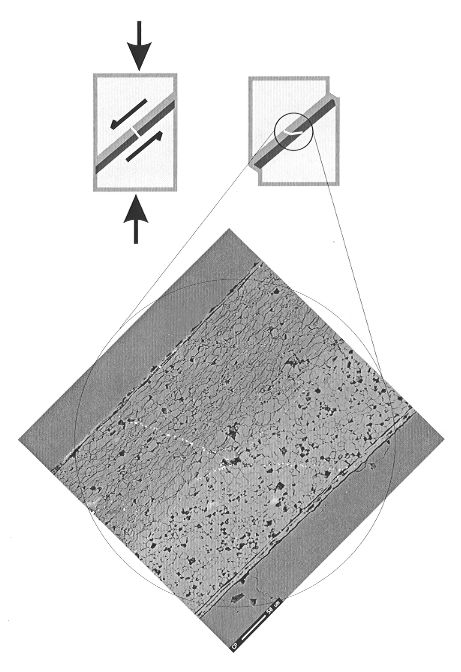

Processes such as mantle convection and the mechanical behaviour of subducting slabs in the upper 600 km of the earth are largely dominated by the rheological properties of olivine and its high-pressure polymorphs, wadsleyite and ringwoodite. Due to problems in performing mechanical tests at high pressure and temperature very little is known about the flow laws of these latter two minerals, in part due to the difficulty in determining the magnitude of the applied stress in high-pressure experiments. One potentially useful measurement, however, is to determine the relative strengths of minerals by subjecting them to identical stress conditions. Such measurements can be made without determining the absolute magnitude of the applied stress. In many cases it is the relative strength and not the absolute strength that controls geodynamic processes.
The object of this project is to deform experimentally two samples simultaneously using the multianvil apparatus. In this way the relative strengths of olivine, wadsleyite and ringwoodite can be determined and additional effects, such as those due to grain size, can be investigated. The technique uses the previously described shear configuration in which a sample, in the form of a thin disc, is placed between two alumina pistons cut at 45 degrees to their long axis.
The relative strengths of materials can be determined by placing two
samples, each with a Pt strain marker, adjacent to each other, as shown
in Fig. 3.1-7. Stress relaxation experiments are
 |
|
Fig. 3.1-7: Experimental configuration and SEM image of a multianvil
two-layer deformation experiment performed on wadsleyite (Fo90)
and olivine (Fo98) at 13.5 GPa and 1200°C. A change in orientation
of the strain marker can be seen between the olivine (top left) and the
wadsleyite (bottom right) layers.
|
being performed on pairs of olivine, wadsleyite and ringwoodite samples
at temperatures between 1200°C and 1400°C and confining
pressures between 11.5 and 16 GPa. In order to stabilise two phases simultaneously
at a single confining pressure, the Fe/Mg ratio is increased in the higher-pressure
polymorphs, so that the compositions lie on either side of the  +
+  or
or
 +
+  divariant loops. In addition, either graphite or zirconia
is placed between the layers and the pistons to avoid chemical reaction.
divariant loops. In addition, either graphite or zirconia
is placed between the layers and the pistons to avoid chemical reaction.
The total strain in each layer is measured by observing the rotation of a Pt strain marker that was oriented perpendicular to the sample/piston interface at the start of the experiment. The rotated strain markers for an olivine/wadsleyite pair that was deformed at 13.5 GPa and 1200°C are shown in Fig. 3.1-7. Both layers have experienced significant strain but the wadsleyite layer has deformed to a greater extent than the adjacent olivine layer. The strain is relatively homogeneous within each layer and there is no displacement of the markers at the interface between the two layers, indicating that slippage along the interface was minimal. These preliminary results indicate that the two-layer technique can be successfully applied to determine the relative strengths of the silicate and oxide minerals that comprise the Earth's mantle.

Tel: +49-(0) 921 55 3700 / 3766, Fax: +49-(0) 921 55 3769, E-mail: bayerisches.geoinstitut(at)uni-bayreuth.de
 Previous page
Previous page